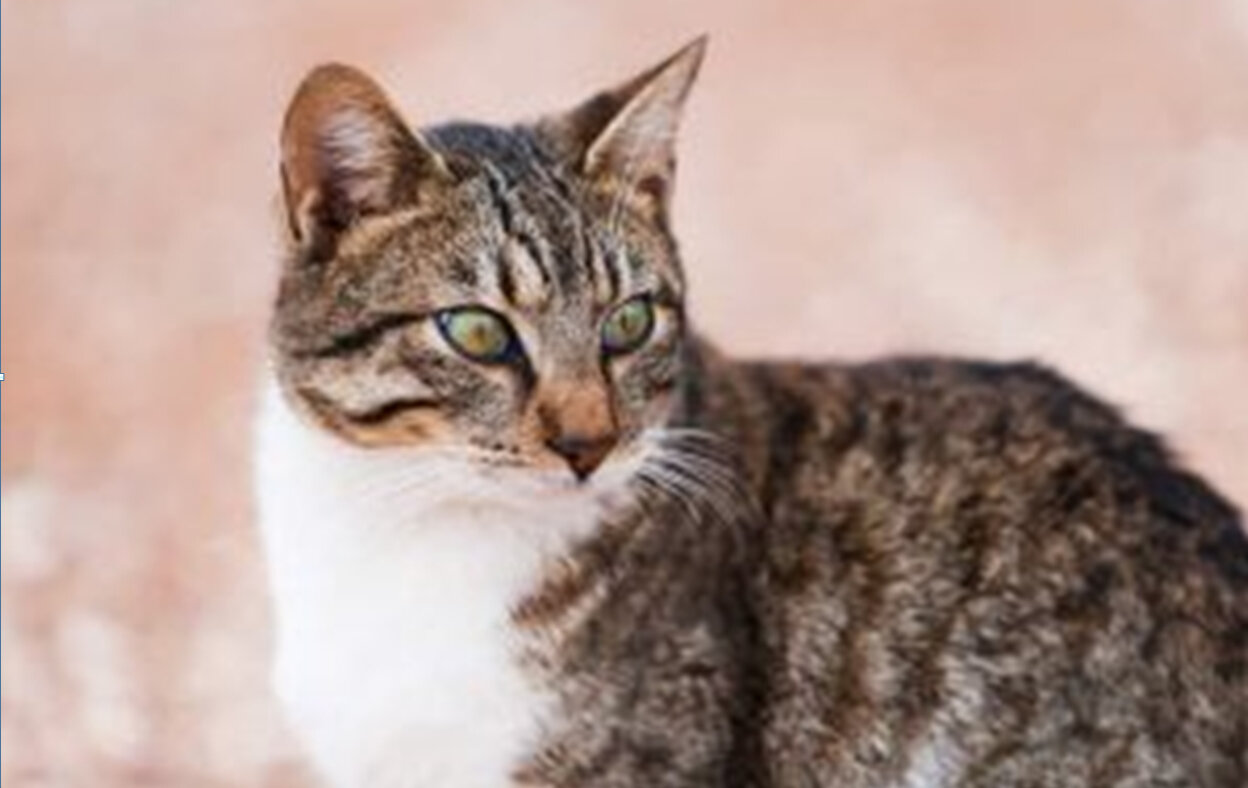Cats
Istock GlobalP
A Curious Partnership
No domestic species divides opinions more than the cat. They are currently the most popular pet in the world, but at the same time are one of the most invasive species on the planet. So how can we reconcile these two very different aspects of the cat? Well, it all comes back to the process of domestication! (Note that though cats share our homes, and are thus domestic, they are in fact not fully domesticated: The tabby on the couch still has tiger in her heart.)
The cat was an unusual choice for partnership with humans: they are obligate carnivores, that is, they require a high-protein diet; they are solitary and independent by nature; they are nocturnal; and they are highly territorial. So, if they are so unlikely a species to share our living space, how did that partnership come about? It has to do with hunting.
Aramco World Magazine
The Story of Feline Domestication
The domestication of the cat is closely tied to our history with another mammal—Mus musculus, the house mouse. With the agricultural revolution over 10,000 years ago, humans were faced with the novel problem of storing crops, especially grains, because an annual harvest provided more food that could be eaten at one time, and the rest of the grain had to be stored till the next harvest. These food stores attracted mice, who spoiled them by eating and defecating in them. All was not lost, however, as the concentrations of formerly foraging rats and mice drew the attention of another wild animal—the wildcat species Felis sylvestris lybica. These small wildcats also began to enter human settlements and communities as they hunted down the rodents. As a result, prehistoric humans and the wildcats developed a symbiotic relationship: the cats killed the mice and we gave them—perhaps unknowingly at first—shelter and protection. So, all the things that made them unlikely domesticates worked to make them successful symbionts of ours. We had no need to alter the appearance or behaviour of the cat during the process of mutual accommodation, because they were already perfectly designed for their job. And with time, affection was added to utility as cats and kittens charmed their way into human hearts and hearths.
George Shuklin, Wikimedia Commons
The Hunt Is on for the First Domestic Cat
Domestication dates of are always tricky to pin down, and the dates of the cat-human relationship is no different.
The Cyprus Cat
Thanks to archaeology, we can say that the accommodation process was underway by c.7500 BCE, because of a Neolithic grave excavated at Shillourokambos, Cyprus. The grave contained the remains of a young feline, interred close to the human occupant—perhaps the oldest such interment. Cats are not native to Cyprus, so we presume that human settlers from the mainland brought cats with them to the island—and likely accidentally transported Mus musculus at the same time, making the cats even more of a necessity). Whether the feline in this grave was a tame wildcat or a fully domestic cat is unclear, but it tells us that as early as 7500 BCE humans and cats were building a relationship together.
The Cypress Cat. Wikimedia Commons
Egyptian Cats
We are on much more secure footing if we jump forward a few thousand years to ancient Egypt. Language can be a useful tool in tracking domestication, and around 4,000 years ago a new hieroglyph appeared—pronounced ‘miw’—a word that refers specifically to the domestic cat. It also coincides with depictions of cats and humans together in Egyptian art. The Egyptians viewed cats as protectors because they killed harmful creatures like scorpions, snakes, and rodents. Cats were also closely associated with two important Egyptian deities: Ra and Bastet. Ra, the sun god, took the form of a large cat every evening when his barge descended into the underworld (the setting sun). He then had to battle the snake demon Apophis to ensure that the sun would rise again the next morning. Bastet is the goddess of motherhood, fertility, and childbirth. She is often depicted as a female cat, and was one of the most popular Egyptian deities. This popularity is highlighted by the tens of thousands of cat mummies found in her temple complex at Bubastis, offerings from her worshipers.
Papyrus of Hunefer, The Trustees of the British Museum
Cats and Christianity
Religion has also played an important role in the treatment of cats in other cultures and periods. Medieval Europe presents an striking example of this. Between 1000 and 1700 CE, millions of cats were tortured and killed across western Europe because of growing witchcraft hysteria. Cats were thought to have demons residing in them, and came to symbolize satanic power. In 1233 Pope Gregory IX issued a decree giving divine sanction for the extermination of cats. On the other hand, there is evidence to suggest that cats were accepted as necessary in rural areas. Furthermore, the presence of cats in churches, cathedrals, and monasteries is attested by the use of cat-holes (so cats could come and go as they hunted) as well as more whimsical but still tangible examples: an inky cat paw print on a 15th century manuscript from a monastery in Croatia, as well as a cat-pee stain on a 15th century manuscript from the Netherlands. The monk scribe circled the stain and wrote a curse on animals that ruin documents. So, although religious authorities may have been calling for the death of all cats, these animals were still very much present in daily life.
Cologne, Historisches Archiv, G.B. quarto, 249, fol. 68r
Curse: Hic non defectus est, sed cattus minxit desuper nocte quadam. Confundatur pessimus cattus qui minxit super librum istum in nocte Daventrie, et consimiliter omnes alii propter illum. Et cavendum valde ne permittantur libri aperti per noctem ubi cattie venire possunt.
Which translates as:
Here there is nothing missing, but a cat urinated on it one night. Cursed be the very bad cat that urinated on this book during the night in Deventer, and all others that do likewise. And be very careful not to leave books open at night where cats can come.
Cats and Islam
Things may have been a bit risky for medieval European cats, but the story was quite different in the Islamic world. Islam views cats as clean and benevolent animals. People faithfully feed street cats, let them doze on outdoor shop displays, and they are welcome in mosques. The Prophet Muhammed had a pet cat named Muezza, who was fond of sleeping on the sleeve of his robe. One day, as she was snoozing away, the call to prayer sounded. Rather than wake her up, the Prophet cut off the sleeve of his robe so as not to disturb her! Islamic traditions view the mistreatment of cats as a serious sin. As elsewhere, they were highly appreciated for their hunting skills. Tabby cats with two lines on their heads were said to bear the mark of the Prophet, and be particularly lucky animals.
Bronze Incense Burner of Amir Saif al-Dunya wa'l-Din ibn Muhammad al-Mawardi. Metropolitan Museum of Art
A Confusing Relationship
So it seems that our relationship with cats has always been uneven. Until recently, their primary purpose has been to hunt pests and vermin, but this has also contributed to their reputation as public enemy number one when it comes to hunting songbirds and to ecosystem destruction in many parts of the world. At the same time, cats are without a doubt the most popular pet in the world: There are more than 600 million housecats across the globe. Between 1986 and 2006, the U.S. housecat population doubled, attesting to a meteoric rise in status. Finally, some cats are social media superstars, with a few famous ones having millions of followers, and incredible influence. This is also true in Australia, where there are an estimated 2.7 million domestic cats—but where their feral cousins face a very dangerous situation. In 2015, feral cats were officially categorized as pests, and the government declared a ‘war on feral cats,’ stating that their new policy would see over two million feral cats killed by 2020, using shooting, trapping, and a reportedly ‘humane’ poison. One region of the country has even put a $10 bounty on cat hides. As horrific as this may sound, the reasoning provided by the government highlights the dangers cats, as an invasive species, pose to the environment: In Australia, feral cats threaten the survival of more than100 native species. And so, the contrast continues: Cats in our homes are spoiled, pampered, beloved pets; while those running free are labeled public enemy number one.
– Dr. Carolyn Willekes






